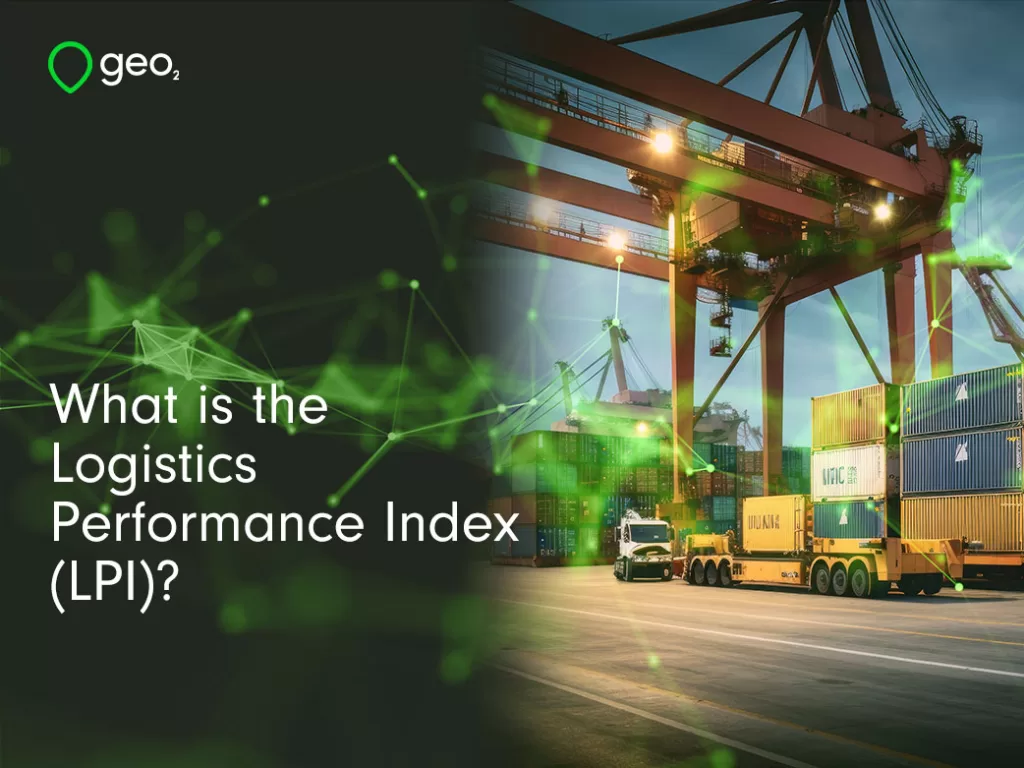
What is the Logistics Performance Index (LPI)?
Introduction.
The heartbeat of global commerce rests within the labyrinth of the supply chain. Just knowing logistics is not enough in today’s competitive market. The Logistic Performance Index (LPI) guides countries and logistics professionals towards an evolving efficient supply chain.
At a fundamental level, It is a composite index that evaluates the logistics ‘friendliness’ of countries. The Logistics Performance Index is a crucial tool for logistics and supply chain managers striving to optimize operations for global success. This article unravels the nuanced significance of the Logistics Performance Index and how it shapes the future of global business.
Need help choosing a TMS?
Download the Free Guide Now.

Table of Contents.
Understanding the Logistics Performance Index.
The Logistic Performance Index is a useful tool for measuring how well a country’s logistics are working. It is a multicomponent index that provides a holistic view of the efficiency of the logistics process. The World Bank annually establishes LPI scores for nearly 160 countries. Each country is ranked from one to five, with five denoting the highest logistics standards.

Table of Contents.
Components of the Logistics Performance Index.
The Logistics Performance Index is built on six distinct components:
- Customs
- Infrastructure
- Logistics Quality and Competence
- Tracking and Tracing
- Timeliness
- International Shipments.
Each component encapsulates various indicators, ranging from efficiency of export and import procedures, to the quality of transport infrastructure.
The LPI is not just a snapshot of a country’s logistics standing. It is determined with real-time data that reflects a dynamic field. It changes, like the logistics market it represents. It influences policy debates and offers feedback on effectiveness and areas for improvement.
How is the Logistics Performance Index Calculated?
Despite its complexity, the Logistics Performance Index calculation prides itself on its transparency. It combines website research, surveys, and interviews with key stakeholders across the supply chain, ensuring a supported, thorough evaluation.
The LPI score mirrors not only the stage of logistics development within each country, but also its service quality. Developing economies may have the potential to jumpstart their logistics by investing in key areas. These include areas such as infrastructure and compliance.
Benefits of the Logistics Performance Index.
Investigating the LPI offers concrete advantages, serving as a catalyst for refining and reinforcing the supply chain strategy.
Improved Supply Chain Visibility.
High LPI scores translate to better visibility across various supply chain activities. This increased visibility helps supply chain managers build and manage flexible supply chains effectively.
Improved visibility is crucial for effective inventory management, demand prediction, and aligning resources proactivel. These are all essential components for a strong supply chain meeting evolving consumer needs.
Enhanced Decision-Making Processes.
The Logistics Performance Index offers in-depth analysis for supply chain professsionals, giving detailed insights. This new understanding enables data-driven decisions for a more adaptive and profitable strategic approach. Using LPI data for decisions in shipping and distribution improves efficiency and profitability.
Competitive Advantage.
In an era characterized by hyper-globalization, Logistics Performance Index insights can mean the difference between industry leadership and lagging behind. Leveraging a high LPI score ensures smooth operations, thereby fostering customer satisfaction and retention in an increasingly competitive market.
Companies with a stronghold on logistics, aided by high LPI scores, often command better terms with suppliers. They also garner a reputation for reliability, solidifying their market presence.

Weaknesses of the Logistics Performance Index.
While the LPI offers a comprehensive view of logistics capabilities, it is not without its shortcomings.
Subjective Nature.
Since the Logistics Performance Index is based on perceptions and surveys, it may not capture the reality of logistics in a country accurately. Stakeholders’ beliefs about a country’s logistics performance may be different from actual conditions on the ground. However, this subjectivity also provides a broad overview of the experience of logistics in a country, including potential areas for improvement.
Limited Scope.
The Logistics Performance Index mainly focuses on supply chain infrastructure and performance. It does not consider external factors, such as regulations and government policies that can significantly impact logistics operations. As such, the LPI should be used in conjunction with other metrics to get a comprehensive understanding of a country’s logistics capabilities.
Challenges in Logistics Performance Index Implementation.
Although LPI charts the course for accomplishing logistical brilliance, its implementation is not without turbulence. The path to operationalizing LPI can be rife with obstacles. However, if navigated skillfully, can lead to mastery of the art of logistics.

Data Collection and Accuracy
The very foundation of LPI rests upon the accuracy of data collected. Ensuring information integrity requires robust data governance structures and the fidelity of survey responses. Meticulous calibration and validation protocols to safeguard against data distortion or manipulation are, therefore, paramount.
Regulatory Compliance Issues
Ensuring alignment with complex and ever-changing regulatory landscapes is arduous. Businesses must remain agile, incorporating changes into their logistical models swiftly and compliantly to maintain high LPI scores.
Technology Integration Hurdles.
Emerging technologies provide a leap forward technologically for many supply chains. However, while promising great leaps in logistical performance, often come with their own set of challenges. Integration into existing systems, employee training, and the associated costs can hamper innovation for less developed countries. This threatesn potential prospects from the LPI.
Case Studies.
The global logistics arena is replete with case studies showcasing the tangible impact of LPI on real-world businesses.
Case 1: Southeast Asia’s Logistics Revolution.
Southeast Asian countries, historically characterized by weaker logistics infrastructures, are revolutionizing their processes by heeding LPI guidance. By prioritizing Customs and Timeliness in LPI components, these countries are experiencing improved logistics efficiency, drawing more industrial investment and trade.

Case 2: The Netherlands' Logistics Powerhouse.
The perennial high LPI rankings of the Netherlands are testaments to the country’s logistical prowess. The Netherlands excels in supply chain logistics globally with its strategic location, excellent infrastructure, and proactive approach. Through LPI, they set a benchmark for the world.
Conclusion: Logistics Performance Index for Global Supply Chain Success.
The Logistics Performance Index offers a quantifiable measure of logistical prowess and an actionable roadmap for supply chain optimization. In a changing world, knowing the LPI well leads to success and excellence in business and operations.
In this conclusion, we emphasize the importance of LPI and urge all supply chain players to take action. Our best advice is to adopt the LPI framework as a core part of your supply chain strategy. Stay agile and well-informed as the logistics landscape evolves, guiding your business towards mastery in logistics.
By focusing on a careful LPI implementation, businesses can excel, surpassing competitors and establishing a legacy of successful logistical performance. In an industry valuing precision and performance, optimizing LPI is no longer a choice but a necessity. Now is the moment to act and lead the charge toward a more efficient and responsive global supply chain landscape.
The Logistics Performance Index is a guide for supply chain professionals in a global market, leading them towards operational excellence. Will you answer its call and turn your logistics from a cost center to a competitive advantage?






